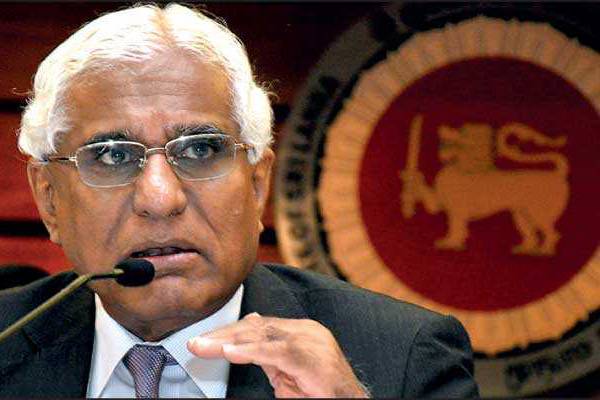The Central Bank yesterday decided to keep policy rates unchanged so the previous reduction in rates could filter through to markets and also safeguard against higher inflation during festivity months as well as any fiscal slippage that could be seen as Sri Lanka heads for Presidential Elections next month.
The Monetary Board of the Central Bank of Sri Lanka, at its meeting held on 10 October, decided to maintain the Standing Deposit Facility Rate (SDFR) and the Standing Lending Facility Rate (SLFR) of the Central Bank at their current levels of 7% and 8%, respectively.
The Board arrived at this decision following a careful analysis of current and expected developments in the domestic economy and the financial market as well as the global economy. The decision of the Monetary Board is consistent with the aim of maintaining inflation in the desired 4%-6% range while supporting economic growth to reach its potential over the medium term.
“The global economic outlook continued to deteriorate largely on account of trade tensions and geopolitical uncertainties, while the global inflation outlook remained subdued with weak demand and low commodity prices. The weak global growth momentum and dampened inflation dynamics have paved way for central banks of many advanced as well as emerging market economies to become increasingly accommodative,” the Central Bank said.
According to provisional estimates published by the Department of Census and Statistics, the Sri Lankan economy grew by 1.6% (year-on-year), in real terms, during the second quarter of 2019, following the growth of 3.7% recorded in the first quarter of 2019.
A notable slowdown was observed in the performance of the Services related activities, which were impacted severely by the Easter Sunday attacks. Agriculture and Industry related activities are also estimated to have grown sluggishly during the second quarter of 2019, compared to the previous quarter.
“Accordingly, economic growth is likely to remain subdued in 2019, and a gradual recovery is expected over the medium term,” the report added.
Headline inflation, as measured by the year-on-year change in the Colombo Consumer Price Index (CCPI) accelerated in September 2019 driven by increased prices of domestic food supplies. Headline inflation based on the National Consumer Price Index (NCPI), which attributes a larger weight to food items, is also likely to accelerate in September.
Food inflation is expected to cause headline inflation to remain somewhat elevated during the remainder of 2019. However, with these transitory supply side price pressures easing, inflation is projected to stabilise well within the desired range of 4%-6% thereafter, supported by appropriate policy measures and well anchored inflation expectations.
Amidst subdued demand conditions, core inflation is expected to revert to low levels from January 2020, mainly with the dissipation of the effect of the one-time large adjustment to house rentals in early 2019.
“Trade performance during the first eight months of 2019 recorded an improvement over the previous year, supported by a notable contraction in the growth of imports and a modest growth of exports. Tourist arrivals continued to improve, recovering gradually from the effects of the Easter Sunday attacks, while workers’ remittances moderated.”
Outflows of foreign investment in the Government securities market experienced in August 2019 have ceased thereafter, while the equity market recorded a modest net inflow so far during the year when both primary and secondary market transactions are considered. Although the Sri Lankan Rupee depreciated against the US Dollar in September partly driven by adverse speculation, this trend reversed in October with continued inflows to the foreign exchange market.
The Sri Lankan Rupee remains appreciated against the US Dollar by 1.3% thus far during the year, while gross official reserves are estimated at $ 7.6 billion by end September 2019, providing an import cover of 4.5 months, the Central Bank said.
The year-on-year growth of credit extended to the private sector by licensed commercial banks continued to decelerate in August 2019, amidst subdued economic activity, weak investor sentiments, and elevated lending rates. In absolute terms, although credit extended to the private sector expanded during the month of August 2019 as well as during the first eight months of 2019, this expansion was far below the levels recorded in the corresponding period of 2018.
Driven by the slowdown in the growth of private sector credit, the year-on-year growth of broad money (M2b) also decelerated during the first eight months of 2019. In view of the ongoing reduction in market lending rates and the expected revival of economic activity, credit expansion is expected to accelerate gradually in the period ahead, thus supporting economic activity further.
The Central Bank took a number of policy, operational as well as regulatory measures during the past 12 months to ease monetary policy and monetary conditions. Deposit interest rates have declined notably with the imposition of caps on deposit rates of financial institutions in April 2019.
In order to induce a faster reduction in market lending rates and enhance efficiency of the transmission of recent policy measures to market lending rates, the Central Bank imposed caps on lending rates while withdrawing caps on deposit rates of licensed banks in September 2019. These regulatory measures, which are to be reviewed by March 2020, together with reduced policy interest rates and the Statutory Reserve Ratio (SRR), are expected to result in a sizeable and speedy reduction in lending rates, which will enhance the demand for credit, going forward.
Considering the current and expected conditions in the economy and the financial market, the Monetary Board at its meeting held on 10 October 2019, was of the view that, at present, the measures that have been put in place during the past 12 months are sufficient to achieve the desired outcomes, given adequate time for their transmission through the financial sector.
Accordingly, the Monetary Board decided to maintain the Standing Deposit Facility Rate (SDFR) and the Standing Lending Facility Rate (SLFR) of the Central Bank at their current levels of 7% and 8%, respectively.
(FT)

